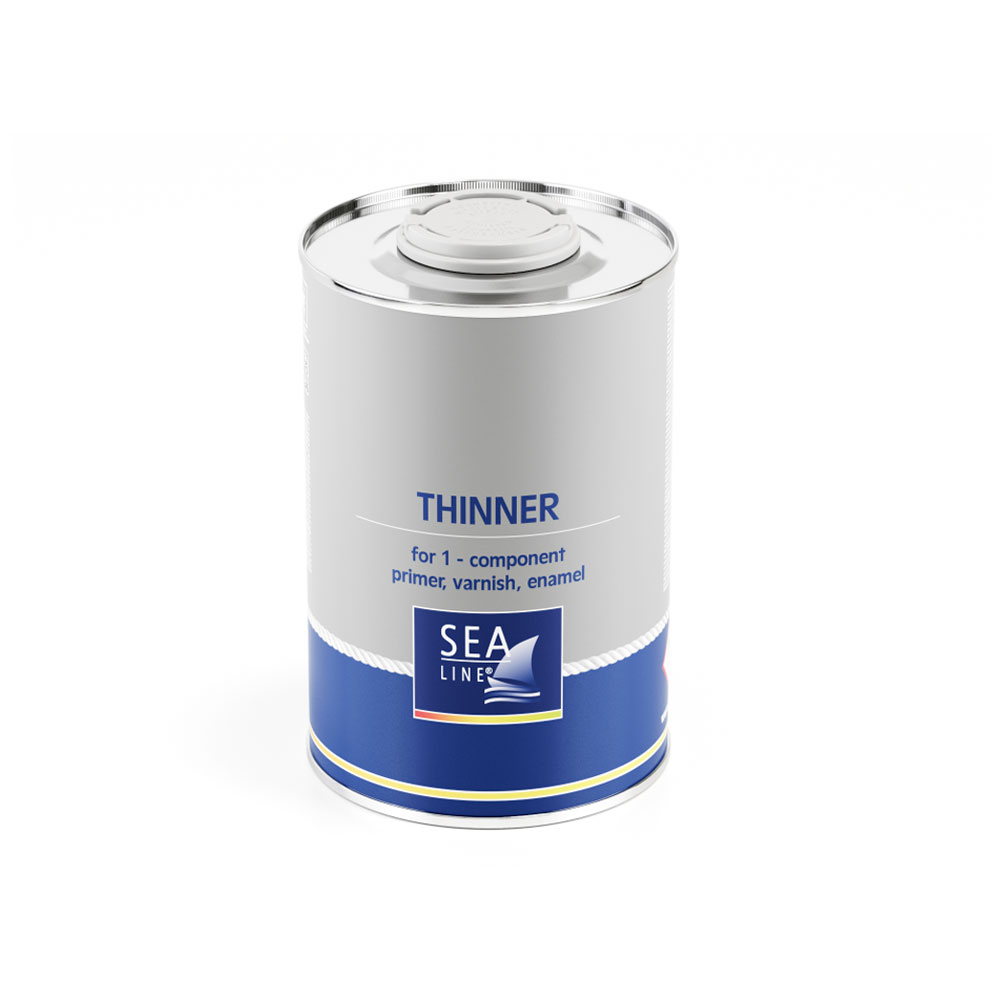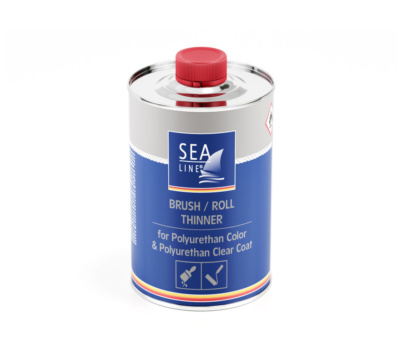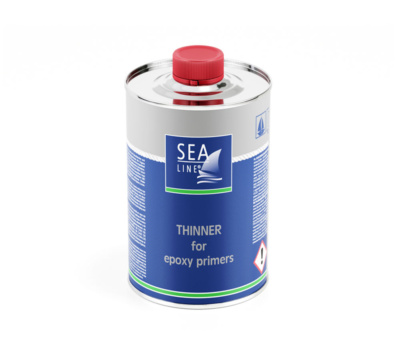It is very important to use paint thinners, which provide the appropriate parameters of paint – flow, pot life, time of drying.
| Capacity | Code |
|---|---|
| 1 l | 300008177 |

Using the appropriate thinner recommended by the manufacturer ensures not only the correct technical parameters during application but also guarantees the achievement of the desired final result. Yacht thinner THINNER for 1K is a mixture of carefully selected solvents. Detailed instructions on the proportions for using the thinner are provided in the technical data sheets of the respective products.

Spray thinner for polyurethane color and high gloss polyurethane clear coat. Thinner for the application

Brush and roll thinner for polyurethane color and high gloss polyurethane clear coat. Thinner for

Thinner for all Sea-Line epoxy primers. It is very important to use paint thinners, which
It is not recommended to apply 2K paints over 1K paints. 1K and 2K inks differ in their composition and properties, including hardness, chemical resistance and durability. 1K paints are one-component and dry by evaporating the solvent, while 2K paints are two-component and need to be cured by adding a hardener. Applying 2K paint over 1K paint can cause unpredictable chemical reactions and lead to undesirable effects such as dulling, chipping or flaking of the paint. Therefore, always use paints according to the manufacturer’s instructions and do not mix different types of paints. farby zgodnie z instrukcjami producenta i nie mieszać różnych rodzajów farb.